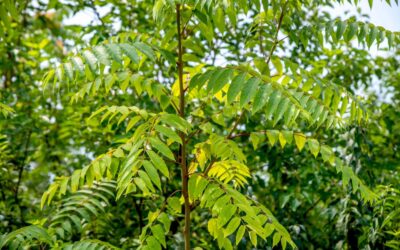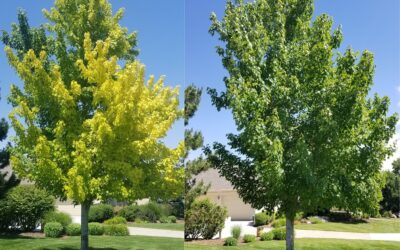The swamp white oak is a North American native that grows naturally in the Great Lakes and Ohio Valley areas of the U.S. and Canada,as well as in isolated pockets as far west as Kansas and as far south as Alabama. It’s a rugged tree that can live for 300 years or more and can hybridize with bur oaks when they grow together in the wild.
Shade, Size, Foliage and Bark
Like all oaks, the swamp white is a great shade tree. It’s a medium-large tree, reaching a mature height of 50-80 feet with an oval canopy of similar dimension. It has leathery lobed leaves that are deep green on top with a silvery underside and usually turn yellow-gold or occasionally to bronze, red, or purple in the fall. Its attractive thick, peeling bark is gray-brown to black with long, deep fissures.
Hardiness, Drought and Disease-Tolerance
Hardy to Zone 3, the swamp white oak adapts well to both rural and urban areas of Colorado. It’s drought-tolerant and adapts to poorly drained and heavy clay soils better than many other oak trees. The swamp white oak has no serious disease or insect problems, but pruning should be restricted to its dormant season to avoid attracting beetles that can carry oak wilt.
Low Maintenance, Attractive and Transplant-Friendly
Swamp white oaks make wonderful shade trees that require little maintenance. They’re attractive as specimen trees and are good choices for parks, street scaping, and areas that are restricted or hard to reach. Swamp white oaks are one of the most successful trees to transplant, too.
If you’re planning to add a white swamp oak or two to your landscape, or need maintenance of any existing trees or shrubbery, Donovan Arborists offers complete landscaping services in the Denver area. We’re happy to give free estimates to homeowners and property managers for any services they may need!



